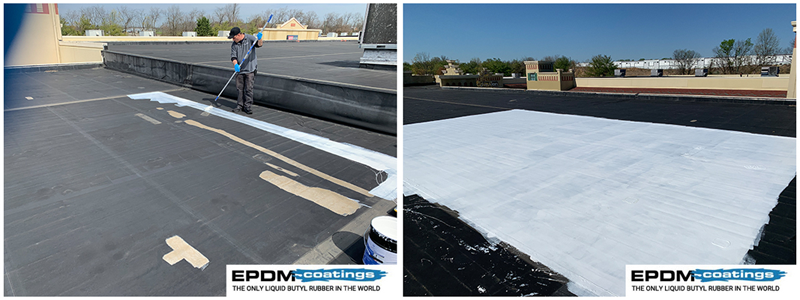As the colder weather moves in, it’s important to take care of those projects you’ve been putting off. That includes sealing your roof, repairing your gutters, and more. Liquid Butyl Rubber is an excellent choice for these types of repairs thanks to its durability, flexibility, and lifespan. However, you’ll need to take specific steps to ensure that you can work with it during fall’s cooler, damper weather. Not sure what needs to be done? We’ve got all the information you need right here.
What Is Liquid Butyl Rubber?
Liquid Butyl Rubber is a synthetic rubber compound known for its flexibility, durability, and ease of application. It’s used for a wide range of tasks, from sealing residential and commercial roofs to waterproofing RV roofs, repairing gutters, and much more. It’s easy to apply using basic hand tools, too, and only requires minimal prep before getting started. That said, fall’s cooler, damper weather can introduce some complications.
It Starts with Proper Storage
Our first tip is to ensure that you store your Liquid Butyl Rubber properly. Keep it as close to room temperature as possible (70 degrees F). That means don’t store it outdoors. If you store it in a garage, make sure the space is temperature-controlled. If you cannot store it in a temperature-controlled environment, consider using a warm water bath to bring it up to working temp before you try to apply it. Note that you should always avoid open flame when using or warming Liquid Butyl Rubber.
Proper Surface Prep
While applying Liquid Butyl Rubber doesn’t require a lot of surface prep, you do need to take a few steps, particularly during fall. First, make sure that the surface is clean and ready. Remove any fallen leaves or other debris. Next, make sure that the surface is dry. Allow any dew to evaporate and thoroughly dry any moisture left over from cleaning. If the weather is overcast, you can accelerate drying by using a fan or even by wiping down the surface with a clean, lint-free cloth (if the project is small enough). Larger projects may benefit from a layer of primer to ensure proper bonding.
Use the Right Tools
It’s always important to use the right tools, and working with Liquid Butyl Rubber is no exception. We recommend using a high-quality roller or paintbrush so that you can apply the material quickly and easily. While you can use a sprayer to apply liquid rubber, we don’t recommend this if the ambient temperature is below 50 degrees F.
Consider Multiple Coats
Because Liquid Butyl Rubber is thicker when it’s cold, you may want to consider applying more than one coat. Apply a single coat and let it cure completely before applying the next one. This helps avoid potential problems, such as failure to cure or bubbling due to moisture trapped between layers. Note that curing takes a little longer in cool weather, particularly if the temperature is 50 degrees F or cooler.
Regarding temperatures, understand that Liquid Butyl Rubber is best applied between 50- and 90 degrees F. This ensures the best workability and easier application.
In Conclusion
As you dive into your fall projects, Liquid Butyl Rubber can be a trusted tool. Its versatility and ability to withstand the changing weather make it an ideal choice for sealing and protecting surfaces during autumn. Remember to store it properly, prepare your surfaces correctly, use the right tools, apply multiple coats, and pay attention to the ambient temperature to get the most out of the material and avoid challenges related to cold, damp weather.



